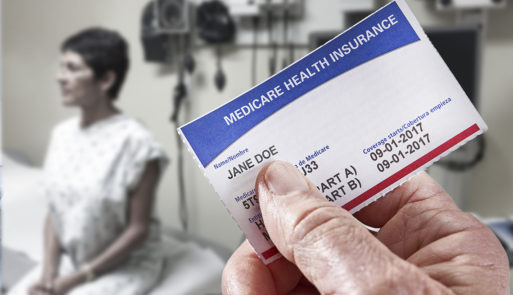
Credit: aarp.org
Last month, the Department of Justice announced the arrest of 24 people across the United States in connection with a $1.2 billion Medicare scam. The scam targeted seniors, calling them on the phone and offering them “free” orthopedic devices such as back, knee and wrist braces, ostensibly to help with arthritis pain. The scammers even used radio and TV ads to promote the scheme.
The Medicare scam involved doctors, telemedicine firms and 130 medical equipment companies across the United States, as well as call centers in the Philippines and parts of Latin America. Authorities first became aware of the issue last summer, when Medicare’s fraud hotline began to receive an influx of complaints. As the investigation widened, the U.S. Health and Human Services inspector general’s office, the FBI, and 17 attorneys general from across the United States eventually became involved.
How the Scam Worked
The scam depended on a sophisticated network of call centers, “telemedicine” providers and medical equipment firms. First, a telemarketer would contact a senior citizen and offer them a free brace — sometimes, more than one. Or a senior would contact a call center after seeing the number in a television ad. After verifying that the senior citizen was Medicare eligible, call center personnel would direct them to a telemedicine provider that was in on the scheme.
Next, a telemedicine doctor would perform a perfunctory “consultation,” either via video or over the phone. The doctor would write a prescription for one or more braces, whether the “patient” actually needed them or not. The call centers then collected the prescriptions and sold them to medical equipment manufacturers, who shipped the devices and billed Medicare. The companies were paid about $500 to $900 per brace, and “kicked back” about $300 of that to the other players in the fraud.
All told, the inspector general’s office estimates that Medicare paid the companies about $900 million of the $1.7 billion billed before investigators uncovered the scam. It was one of the largest Medicare scams ever perpetrated in the United States.
Identities Compromised
Although the seniors targeted in the Medicare scam received the braces that had been ordered for them and did not pay anything up front, they were still victims of fraud, authorities say. That’s because, once information such as Social Security and Medicare numbers are in the hands of crooks, it’s easy for that information to be sold or shared.

Millions of seniors received knee, shoulder and back braces they didn’t need in one of the largest Medicare scams ever perpetrated in the U.S.
“….After giving out your identifying information, it could be compromised to perpetuate additional fraud,” said Gary Cantrell, who heads fraud investigations for the inspector general’s office. “There is no fraud without the ID number of a Medicare beneficiary,” he said.
The Growing Problem of Medicare Fraud
Medicare fraud and abuse cost U.S. taxpayers billions of dollars each year. Although reliable data on the actual amounts improperly paid to healthcare providers by Medicare don’t exist, the Government Accountability Office estimates the amount was about $52 billion in 2017. It’s unclear how much of that amount derived from fraud and how much was from what experts term Medicare abuse, which ranges from improper billing practices to performing unnecessary services in order to pad the patient’s bill. Both, however, are illegal and punishable by imprisonment, financial penalties or both.
If you believe you have been a victim of Medicare fraud or any other healthcare scam, know that you can and should report your suspicions immediately. Call the Medicare Fraud tip line at 1-800-HHS-TIPS (1-800-447-8477; TTY 1-800-377-4950). You may also fill out a fraud report online or mail a complaint to:
Office of the Inspector General HHS Tips Hotline
PO Box 23489,
Washington, D.C., 20026-3489
All of the information you provide will be treated confidentially and shared only as necessary to investigate your complaint.

 A $1.2 Billion Medicare Scam Targeting Seniors Leads to Arrests
A $1.2 Billion Medicare Scam Targeting Seniors Leads to Arrests


 Our Annual Seven Holiday Gifts for Someone Who Is Grieving, 2024 Edition
Our Annual Seven Holiday Gifts for Someone Who Is Grieving, 2024 Edition
 “Making Mobiles” by Karolina Merska
“Making Mobiles” by Karolina Merska
 “Hands Up to the Sky” by Michael Franti & Spearhead
“Hands Up to the Sky” by Michael Franti & Spearhead














